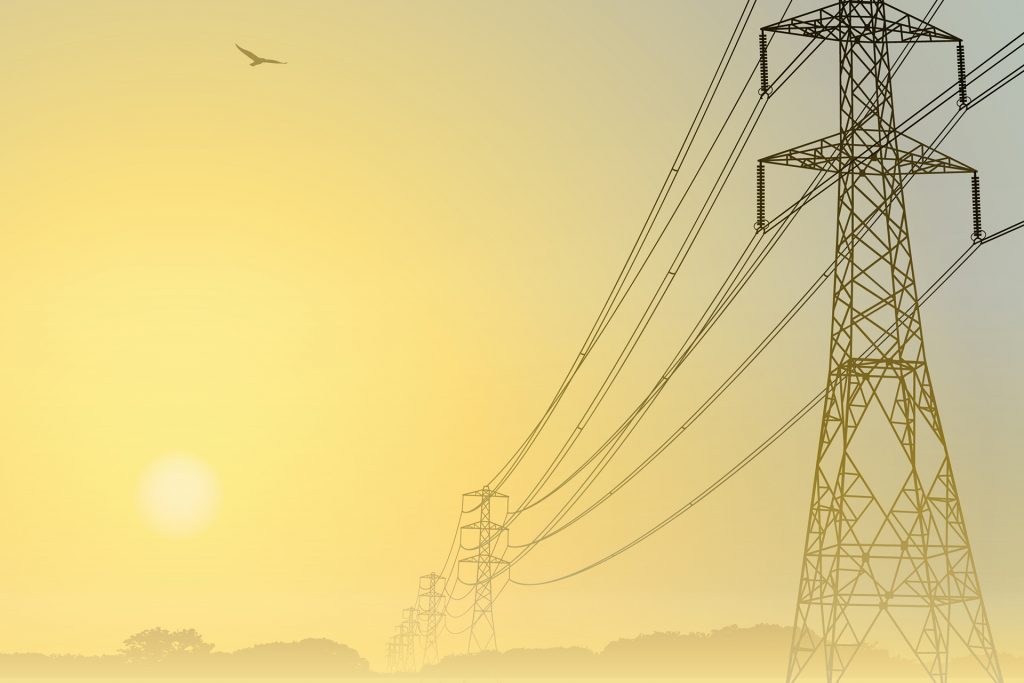In 2012, Europe faced an extreme cold wave. Temperatures in France dropped to minus four degrees Celsius, far below its average of five above.
As people huddled indoors, electric heaters were dialled up and lights were switched on. Electricity demand soared. It topped at 102 GW, surpassing the country’s previous peak by more than 20 GW. France had to import power from neighbouring countries.
The low temperatures drove demand so high the country couldn’t manage on its own. It’s something we see across the world – temperature peaks drive how and when we use electricity, increasing demand in the colder Northern European countries as the temperature falls, and acting inversely in hotter Southern countries.
But more than just driving up how much electricity we need, the temperature can affect how much we pay for it, too.
Putting a price on electricity
In the UK electricity is bought and sold by power generators, energy suppliers and the National Grid by the megawatt hour (MWh). One MWh is roughly enough power to boil 400 kettles and although prices fluctuate significantly, on average one MWh costs roughly £50 in the UK. In winter, when UK electricity demand peaks it’s estimated that for every degree the temperature drops below 15 Celsius, demand rises by 820 MW.
Electric Insights, an independent report produced by researchers at Imperial College London and commissioned by Drax via Imperial Consultants, looks at the UK’s publicly available electricity data and clearly shows the trend.
As the temperature drops, demand rises.
This raised demand affects the price of electricity in one obvious way: consumers’ bills rise because they’re using more of it. A less obvious impact is its effect on the production and supply cost of electricity from generator to the high voltage electricity transmission grid.
How temperature affects supply
In cold weather power plants work better. Cooling towers are more efficient, power cables are more conductive, and less energy is needed to help keep generating equipment from overheating. This all adds to small cost savings, which in turn can make electricity cheaper.
However, during colder weather the amount of gas used in the UK goes up – largely due to the rise in heating – which raises its price and this has a knock effect on electricity. For every 1p increase in the cost of gas, the cost of generating 1 MWh by a CCGT (combined cycle gas turbine) power station increases by around 70p. As CCGTs generate a large percentage of Britain’s electricity, the overall price of electricity also goes up.
But a bigger cost-determining factor is the increasing variety in today’s energy make up. Renewables like wind and solar are intermittent energy sources. Solar can’t function at night or when it’s overcast; wind turbines don’t rotate when it’s still, so when it is especially cold, dark or without much wind, the Grid needs to bring in additional flexible power generated by sources like biomass, gas and coal. These technologies can either deliver power to the Grid all the time – known as baseload – or just when demand rises, when they can be dialled up quickly.
But in the event of extreme weather, the demand for power can surge and the Grid needs to bring in additional generation capacity. In Britain, there are smaller power stations fuelled by diesel, oil or gas that lie dormant for much of the year but can start up at short notice to provide this boost of generation to meet demand.
Activating and running these plants quickly for short amounts of time can be expensive, and this can subsequently affect electricity price and lead to spikes in the winter.
 The effect on the bottom line
The effect on the bottom line
This leads to the following trend: for every degree Celsius the temperature falls below 10, there is a corresponding rise of £1.10 MWh. It is also possible for increases in temperature to cause increased prices, but this is usually in countries where air conditioners and electrically-powered cooling units are hooked up to their own national or regional electricity grid. For better or worse, this is not a problem that affects the UK, but it’s important to understand that maintaining grid stability will always have its costs, whatever the weather.












